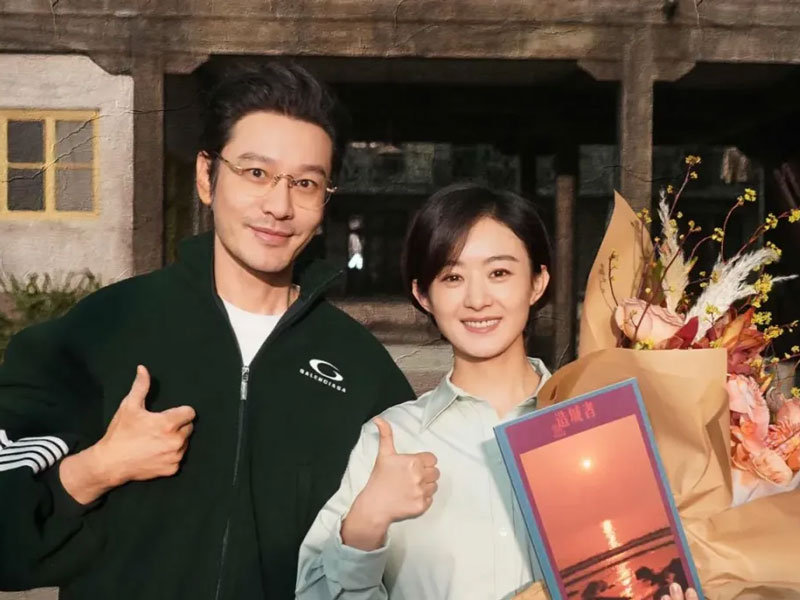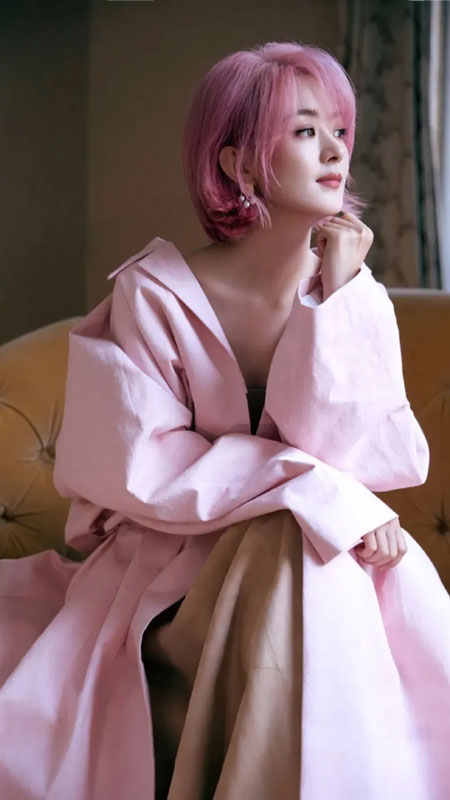In Zhao Liying's transformative acting journey, hair has evolved beyond mere aesthetics into a powerful narrative device. Her radical shift to ultra-short styles in recent roles—notably as grassroots cadre Li Qiuping (李秋萍) in The City Maker (2025) and feminist writer Xilin (西林) in She's Got No Name (酱园弄)—transcends fashion statements. These deliberate coiffures function as "second dialogue," visually articulating her characters' resilience against societal constraints. This sartorial semiotics marks a career-defining metamorphosis for the actress, where every clipped strand whispers revolutionary subtext about womanhood in changing eras.
Steel and Silk in The City Maker
Li Qiuping’s cropped silhouette, grazing the ear lobes, channels 1980s China’s pragmatic ethos. Unlike ornamental hairstyles, this utilitarian cut—paired with minimal makeup—mirrors her character’s mission: literally building cities from tidal flats. The sharp angularity of the cut contours her jawline like architectural blueprints, symbolizing socialist construction’s unyielding progress . When Li shoulders construction materials alongside Huang Xiaoming’s (黄晓明) character, wind-swept strands cling to sweat-dampened temples, rendering sweat equity visible.
Director Chen’s visual language uses Li’s hair as a barometer of struggle. In boardroom confrontations, neatly combed strands reflect bureaucratic precision; at muddy worksites, disheveled tufts escape hairpins to dance with dust motes. This duality embodies reform-era women balancing femininity with fortitude. The hairstyle’s historical accuracy—validated by period photographs—earned praise for resisting glamorization while projecting quiet authority.
Production notes reveal Zhao lost 15kg and donated 30cm of hair for authenticity. Her silhouette’s sharpened angles under the sun echo cranes piercing skylines—a metaphor for China’s urbanization. As Li strides through rising concrete skeletons, backlit dawn haloes her cropped head, transforming her into a monument of perseverance.
Scissors as Resistance in Sauce Alley
In She's Got No Name (2025), Zhao’s androgynous pixie cut becomes ideological weaponry. As Xilin—a fictionalized version of feminist writer Su Qing—her cropped hair defies 1940s conventions where long tresses signified marital virtue. The razor-parted undercut, often hidden beneath fedoras, visually parallels her clandestine activism for Zhan Zhoushi (詹周氏), a real-life husband-killer whose trial exposed domestic violence.
Costume designer Zhang Shu juxtaposes masculine tailoring with deliberate femininity: a single pearl earring glimmers beneath the ear-grazing cut during courtroom scenes. When Xilin removes her wig after theatrical performances, the abrupt reveal of gamine hair shocks audiences—both diegetic and cinematic—into confronting female duality. This sartorial bait-and-switch critiques societal performance womanhood demands.
The character’s most iconic moment sees Zhao in a smoke-filled study, ink-stained fingers raking through tousled silver-tipped locks as she drafts polemics. Cinematographer Mark Lee Ping-bing frames her reflection in a rain-lashed window: the fractured glass mirrors how Xilin’s radical appearance shatters patriarchal norms. Her climactic courtroom cry ("She slaughtered a beast, not a man!") resonates through the auditorium, every syllable punctuated by the stark geometry of her silhouette.
Cultural Resonance Beyond the Screen
Zhao’s tonsorial revolution ignited tangible social discourse. Within 48 hours of The City Maker trailer release, Baidu searches for "women’s short haircuts" surged 200%. Salons reported millennials requesting "Li Qiuping’s builder bob"—a tapered style emphasizing nape definition for workplace gravitas . Sociologist Dr. Lin Wei notes this reflects Gen-Z’s rejection of "length equals femininity" dogmas, embracing efficiency-oriented beauty standards.
Conversely, She's Got No Name’s stylized cut sparked academic debates. Peking University’s Gender Studies Center hosted forums dissecting Xilin’s hair as semiotic resistance, noting its parallels with 1920s flapper rebellions.
The ripple effect transcends China. At Milan Fashion Week, Versace’s punk-inspired cropped wigs echoed Xilin’s aesthetic, while Shanghai’s youth subcultures adopted "accidental tufts" styling—Zhao’s technique of finger-fluffing waxed ends to appear defiantly unkempt. This organic replication proves how screen imagery can redefine real-world beauty codes when fused with authentic storytelling.
From Li Qiuping’s sun-baked crop to Xilin’s ink-black rebellion, Zhao Liying’s sheared strands have become cultural texts decoding female resilience. These transformations transcend vanity—they’re deliberate deconstructions of gendered expectations weaponized through hairstyling. As Zhao herself stated during The City Maker press tour: "Hair is the flag women plant on the battlefield of self-definition." Her characters’ scalps now map uncharted territories for Chinese womanhood, proving that sometimes, the most revolutionary statements require no words—just scissors.



